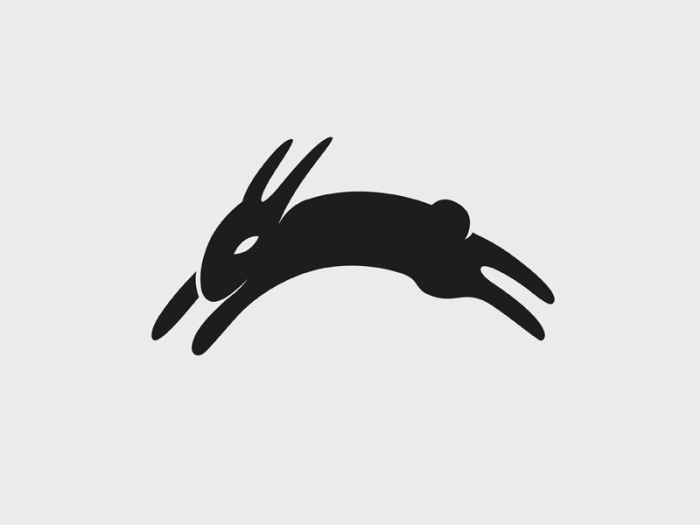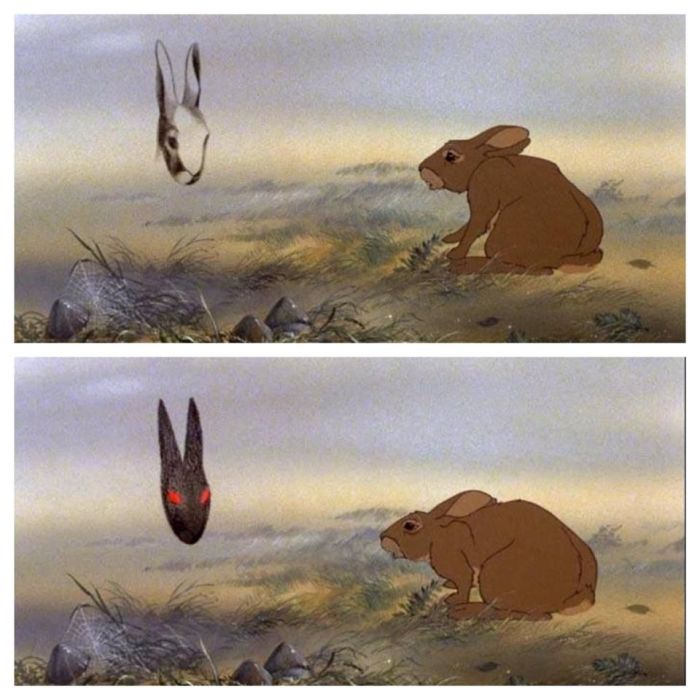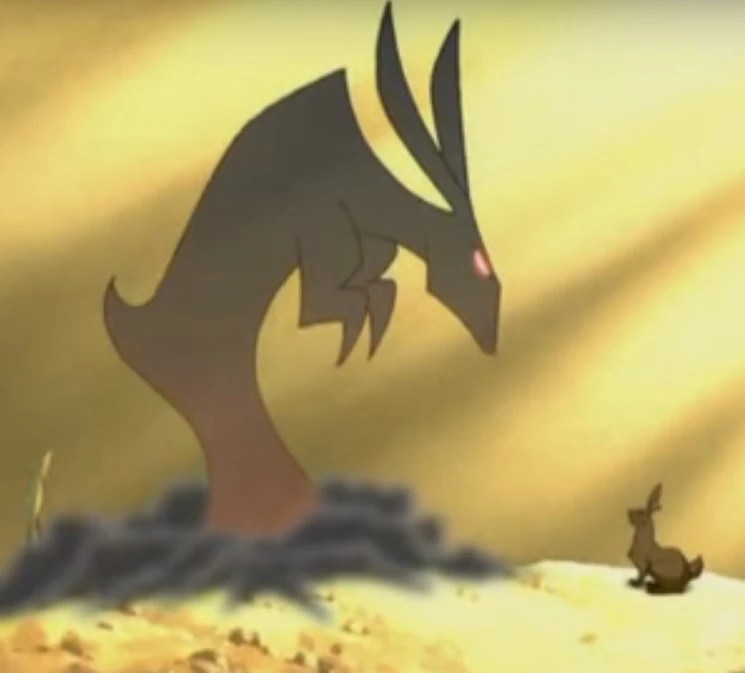The Black Rabbit of Inle takes center stage, inviting us into a captivating exploration of folklore, symbolism, and cultural significance. This mythical creature weaves its way through the tapestry of Inle culture, leaving an indelible mark on beliefs, traditions, and artistic expressions.
From its origins and significance in local lore to its profound impact on Inle society, the Black Rabbit holds a special place in the hearts and minds of the people. Its symbolism, representing fertility, protection, and prosperity, has permeated various aspects of life, shaping cultural practices and inspiring artistic endeavors.
The Black Rabbit of Inle: Folklore and Legends

The Black Rabbit of Inle is a legendary creature deeply embedded in the folklore and traditions of the Inle people of Myanmar. This enigmatic figure holds a profound significance in their culture, with stories and anecdotes passed down through generations.
The origins of the Black Rabbit are shrouded in mystery, but it is believed to be a manifestation of the spirit world. According to local legends, the rabbit represents the protector of Inle Lake and its surrounding villages, guarding against evil spirits and ensuring the well-being of the community.
Stories and Anecdotes
Numerous stories and anecdotes illustrate the role of the Black Rabbit in Inle beliefs. One popular tale recounts how the rabbit intervened to protect a village from a group of raiders. As the raiders approached, the Black Rabbit appeared and distracted them, leading them astray into the surrounding marshes.
Another story tells of a young woman who was lost in the forest. As darkness fell, she stumbled upon a clearing where she saw the Black Rabbit. The rabbit guided her back to her village, ensuring her safe return.
Symbolism and Cultural Significance

The Black Rabbit of Inle is a revered figure in Inle culture, embodying a multitude of symbolic meanings and cultural significance.The rabbit is often associated with fertility and abundance, as its prolific breeding habits represent the growth and prosperity of the Inle community.
Its black fur symbolizes protection and warding off evil spirits, ensuring the safety and well-being of the people.
Prosperity and Abundance
The Black Rabbit is believed to bring prosperity and abundance to the Inle people. Its image is often found on traditional textiles, carvings, and other decorative items, representing the hope for bountiful harvests, thriving businesses, and a prosperous future.
Protection and Warding Off Evil
The black fur of the rabbit is seen as a symbol of protection against evil spirits and negative influences. Inle folklore tells of the rabbit’s ability to ward off misfortune and keep harm away from the community.
Cultural Identity and Heritage
The Black Rabbit of Inle is deeply ingrained in the cultural identity and heritage of the Inle people. It represents their connection to the natural world, their beliefs, and their unique cultural traditions. The rabbit serves as a reminder of the community’s rich history and shared values.
Artistic Depictions and Representations: The Black Rabbit Of Inle
The Black Rabbit of Inle has inspired a wealth of artistic creations, capturing the imagination of artists and artisans alike. From paintings to sculptures and textiles, the Black Rabbit has been depicted in various mediums, each offering unique interpretations and representations of this enigmatic creature.
Paintings
In paintings, the Black Rabbit is often portrayed as a solitary figure, its sleek black coat contrasting against a vibrant background. Some paintings depict the Rabbit in a natural setting, surrounded by lush vegetation and sparkling water, while others present it in a more abstract or symbolic context.
Sculptures
Sculptures of the Black Rabbit range from small, intricate carvings to large, imposing statues. These sculptures capture the Rabbit’s distinctive physical features, such as its long ears, piercing eyes, and sleek body. Some sculptures depict the Rabbit in a dynamic pose, while others portray it in a more contemplative or serene state.
Textiles, The black rabbit of inle
The Black Rabbit has also been incorporated into textile designs, particularly in traditional Burmese textiles. Inle Lake is renowned for its high-quality silk and cotton fabrics, and many of these textiles feature intricate patterns inspired by the Black Rabbit. These textiles are often used in traditional costumes and ceremonies, adding a touch of cultural significance to the Rabbit’s artistic representations.
Tourism and Economic Impact
The Black Rabbit of Inle has played a significant role in tourism and has had a positive economic impact on the region. The legend and symbolism associated with the rabbit have been effectively leveraged to attract visitors and promote local businesses.
Leveraging the Legend and Symbolism
The unique legend and the symbolic meaning of the Black Rabbit have made it a captivating attraction for tourists. Visitors are drawn to the mystery and allure surrounding the rabbit, eager to experience the cultural significance it holds for the local community.
Tour operators have capitalized on this interest, offering guided tours and boat excursions to explore the lake and its surroundings, often highlighting the legend of the Black Rabbit.Local businesses have also benefited from the increased tourism. Hotels, restaurants, and souvenir shops have seen a rise in patronage, as visitors seek to immerse themselves in the culture and traditions associated with the rabbit.
The sale of souvenirs and handicrafts featuring the Black Rabbit has become a thriving industry, providing income for local artisans and contributing to the overall economic development of the region.
Ethical Considerations and Challenges
While tourism related to the Black Rabbit of Inle has brought economic benefits, it is essential to consider the ethical implications and potential challenges. Overcrowding and environmental degradation can arise due to excessive tourism, which can harm the delicate ecosystem of the lake and its surroundings.Respect
for local customs and traditions is paramount. Visitors should be mindful of their behavior and actions, ensuring they do not disrupt the daily lives and cultural practices of the Inle community. Sustainable tourism practices should be implemented to minimize the negative impacts of tourism on the environment and local culture.
Conservation and Preservation

The Black Rabbit of Inle is a significant cultural icon and a vital part of the ecosystem in the Inle Lake region. Conservation efforts are crucial to protect this unique species and preserve its cultural heritage.Preserving the natural habitat of the Black Rabbit is paramount.
The wetlands and surrounding forests provide food, shelter, and breeding grounds. Conservation initiatives aim to protect these areas from encroachment, pollution, and unsustainable practices. Sustainable tourism practices also contribute to conservation by minimizing the impact on the environment.
Habitat Conservation
The Inle Lake region is facing challenges from deforestation, agricultural expansion, and pollution. Conservation efforts focus on protecting the wetlands and forests that support the Black Rabbit population. Local communities are involved in reforestation programs and sustainable land management practices to ensure the long-term survival of the species.
Sustainable Tourism
Tourism can both benefit and harm conservation efforts. Responsible tourism practices, such as staying on designated trails, respecting wildlife, and supporting local businesses, can generate revenue for conservation initiatives. However, mass tourism and unregulated development can damage the environment and disrupt the delicate ecosystem.
Challenges and Opportunities
Conserving the Black Rabbit of Inle requires collaboration between local communities, conservation organizations, and government agencies. Balancing the needs of conservation with economic development and tourism poses challenges. Sustainable practices and education campaigns are essential to ensure the long-term preservation of this iconic species and its cultural significance.
The black rabbit of Inle is a mysterious creature that is said to bring good luck to those who see it. In the hobbit ch 2 summary , Bilbo Baggins encounters a black rabbit that leads him to the Misty Mountains.
The rabbit is a symbol of hope and guidance for Bilbo, and it helps him to find his way through the treacherous mountains. The black rabbit of Inle is a reminder that even in the darkest of times, there is always hope.
Cross-Cultural Comparisons

The Black Rabbit of Inle shares similarities with other mythological creatures and cultural symbols worldwide, fostering cross-cultural exchange and understanding.
The Black Rabbit’s association with water and fertility aligns with the Japanese Kappa, a water sprite with a turtle-like shell and webbed feet. Both creatures symbolize the fluidity and life-giving properties of water.
The White Rabbit
The Black Rabbit also resembles the White Rabbit in Lewis Carroll’s Alice in Wonderland. Both creatures possess a sense of urgency and a connection to time, emphasizing the importance of punctuality and responsibility.
The Lunar Hare
In Chinese folklore, the Black Rabbit parallels the Lunar Hare, a celestial creature associated with the moon. Both symbols represent longevity, prosperity, and the cyclical nature of time.
These cross-cultural comparisons highlight the universality of certain archetypes and the human fascination with nature’s mysteries. They facilitate a deeper appreciation of different cultures and their shared values and beliefs.
Quick FAQs
What is the origin of the Black Rabbit of Inle?
The origins of the Black Rabbit are shrouded in mystery, but it is believed to have emerged from ancient animistic beliefs and nature worship prevalent in the Inle region.
How is the Black Rabbit depicted in Inle art?
Artists have captured the Black Rabbit’s essence in various mediums, portraying it as a majestic creature with sleek fur, long ears, and piercing eyes. These depictions often incorporate symbolic elements, such as lotus flowers or water lilies, reflecting its connection to the natural environment.
What is the significance of the Black Rabbit in Inle tourism?
The Black Rabbit has become a symbol of Inle’s cultural heritage, attracting tourists eager to learn about its folklore and symbolism. Visitors can immerse themselves in the legend by visiting temples, exploring local markets, and participating in traditional ceremonies.